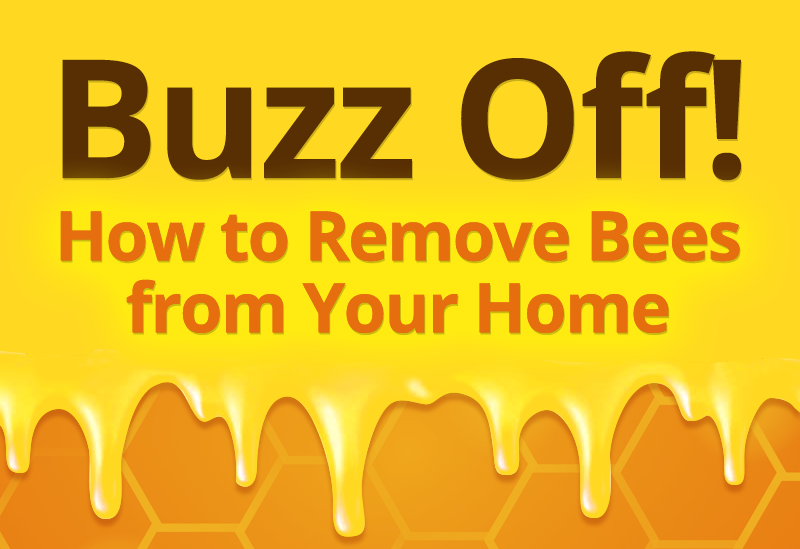Bees are an integral part of our food production and essential to the health and beauty of the flowers and plant life on our planet. But when they’ve decided to take up residence in your residence, it’s time to safely send them along.
But beware, this is no task for a novice. Expert care is necessary to identify and relocate these precious honeybees without causing harm to the homeowner or the hive.
Share This Infographic On Your Site
Honeybee Fast Facts
- A queen bee can lay up to 2,000 eggs in a day
- A well-established colony can contain 100 lbs of honey
- A strong bee colony can produce 2-3 times more honey than it needs
- Bees fly 55,000 miles per pound of honey
- Each hive contains one queen bee, a few male drones, and many female worker bees
- A single hive can contain 10,000 to 60,000 honeybees
Removing Bees Safely
Hive Relocation
Hive relocation is the ideal option for hives that are easily accessible or located where a wall can be removed.
The process:
- A hive relocation is scheduled for a time when no humans or pets are in the area, and ideally in late winter and early spring when the hive is at its smallest.
- The bee handler then locates the nest by listening for the colony’s buzz or by drilling small holes in a wall and inserting a wire to locate the periphery of the nest.
- Once located, the bee handler dons protective clothing and uses a bee vacuum or bee box to collect the bees and transfer them to a safe place, away from your home.
- After the colony has been removed, the area is cleaned with soap and hot water to remove odors.
- Structural damage is then repaired, and all cracks and holes are sealed to prevent recolonization by another swarm.
Trapping
Trapping is a non-invasive approach that removes an inaccessible hive over the course of 2 to 3 months.
The process:
- All other entries are sealed off and a screen cone is placed over the primary bee entrance.
- A hive with a new queen is placed outside the entrance. Returning bees unable to reenter the existing hive will instead occupy the adjacent hive.
- The small remaining queen and brood is then extinguished by a non-residual pesticide.
- The screen cone is then removed and bees from the new hive will return to the old hive and remove any remaining honey.
- The honeycomb is then rendered inaccessible by sealing up cracks and holes to prevent occupation by another swarm.
CAUTION! BEES!
Never try to remove a hive on your own. Bee removal can be dangerous and unnerving, even to the experienced professional. The health of our families and our food supply depend on our careful handling of the industrious honeybee, so call an expert today!
Brought to you by Adios Pest Control| www.adiospestcontrol.com


